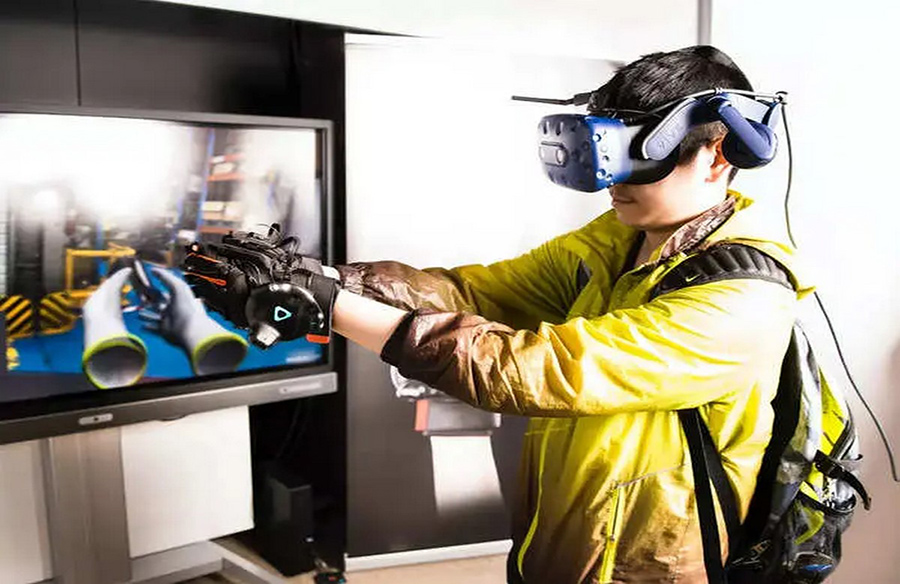
The recent grant of a patent by the US Patent and Trademark Office to Apple signifies a significant advancement in virtual reality (VR) technology. This patent, numbered 11,347,312, introduces the concept of haptic output components capable of generating ultrasonic sound waves. With implications for both controllers and head-mounted displays (HMDs), this technology aims to enhance users’ VR experiences by providing immersive haptic feedback.
Transforming Virtual Realities with Ultrasonic Haptics
Apple’s patent suggests that the integration of ultrasonic haptic sound waves could revolutionize the VR landscape, offering users the sensation of rain, breeze, and other environmental elements within virtual and mixed reality environments. This advancement is particularly relevant to Apple’s long-rumored AR/VR headset, promising a heightened sense of realism and immersion for users.
Addressing a Key Gap in VR Technology
Despite the growing popularity of AR/VR headsets, a notable gap in the technology has been the absence of haptic feedback. This missing element has hindered the ability to fully immerse users in virtual environments. Apple’s patent filing indicates a proactive approach to addressing this challenge, signaling the company’s commitment to delivering a more complete and immersive VR experience.
Pioneering Innovation in the Metaverse
Apple’s exploration of ultrasonic haptic technology aligns with a broader industry trend towards advancing mixed and virtual reality experiences. Notable players such as Meta, Nvidia, and Microsoft are investing substantial resources into metaverse-focused hardware and software, aiming to create seamless and immersive virtual worlds. By integrating ultrasonic haptic feedback, Apple seeks to contribute to the evolution of the metaverse, bringing users closer to the reality of virtual environments.
Beyond Apple: Innovations in Haptic Technology
While Apple leads the charge in exploring ultrasonic haptic technology, other players in the industry are also making strides in this domain. California-based startup Emerge, for instance, is developing devices that utilize ultrasonic waves to create tactile sensations. Their Wave-1 tabletop panel demonstrates the potential of haptic feedback in enhancing virtual interactions, offering users a more immersive and engaging experience.
The Future of Social Interaction in VR
As VR technology continues to evolve, the integration of ultrasonic haptic feedback holds the promise of transforming social interactions within virtual environments. With a significant percentage of users expressing a desire for physical interaction in virtual worlds, the incorporation of haptic feedback into head-mounted displays could serve as a pivotal element in shaping the future of VR-based social interaction.
Apple’s exploration of ultrasonic haptic technology represents a bold step towards redefining the boundaries of virtual reality. By harnessing the power of sound waves to deliver tactile sensations, Apple aims to elevate the VR experience, bringing users one step closer to seamless immersion in virtual worlds.












Leave a Reply